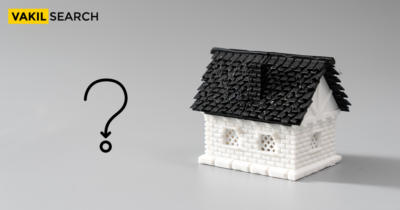This page outlines how to apply for your land records online, track the progress of your application, and confirm the legitimacy of your Patta certificate.
Apply for Patta Online In Tamil Nadu
India’s Land and Revenue Administration has recently seen a positive transformation due to the digitization of land records. Tamil Nadu’s Government has also made rapid strides in digitizing its land records. The Revenue Department’s Patta is a land revenue document that proves land ownership and title. Tn Patta contains the landowner’s name, the Patta number, the Survey number, the Subdivision number, information on the District, Taluk, and Village, the land’s area, and whether the property is dry or wetland. The Patta Register at the Taluk office maintains track of all land ownership information for a given piece of land. Before purchasing any land, it is essential to verify Patta to guarantee that the property is being purchased from genuine owners. Learn how to apply for tn Patta Online details.
What Exactly is Patta?
Pattas are legal documents that are provided by the Government of Tamil Nadu to individuals who own property in the state. Tn Patta, which may be obtained from the office of the relevant Tahsildar in any given district, can operate as a revenue record in the owner’s name against the property. This record can be compared to the property’s assessed value.
The following data appears on a Patta:
- Who is the property owner
- Pattas number for the land
- The applicable district, taluk, and village
- Survey number of the land
- Subdivision
- Extents of the land
- Whether the terrain is Punjai Nilam or Nanjai Nilam is determined by whether or not it is a Dryland or a Wetland
- Details about land tax.
Once the deal has been finalized and the buyer has taken possession of the property, the seller must contact the appropriate Taluka office to get a clear property title. To preserve clear ownership, the seller must transfer the Patta into the buyer’s name.
Types of Patta
Discover the various Types of Patta that cater to distinct circumstances and individuals:
- Natham Patta: Issued for those without a personal residence in their revenue village.
- AD Condition Patta: Governed by the Adithravidar Nalan Dasildar, it assigns plots to landless tribals and Adithravidars, featuring a signature from the individual governor and a photo of the Patta holder.
- Land Handover Patta: Allocated by the government to ex-servicemen, economically disadvantaged individuals from backward classes, known as the land handover belt beneficiaries.
- TSLR Patta: Town Survey Land Record document, outlining urban land details.
- Additional Types: UDR (Updating Data Registry), Manual Patta, 2C Patta, and Joint Patta, each serving unique purposes in the realm of land records. Explore the nuances of ownership through these diverse Patta categories.
How to cancel a Patta of land issued to another person by the taluk office?
You need not panic. But, make it a point to keep all the original and registered documents and let the Tehsildar know via a registered post, regarding the problem. You will have to also visit the concerned office of the Tehsildar, in the next 30 days. If none of this works, you might have to reach out to the revenue office. Make sure to carry all the necessary documents.
Digitisation of Adangal
Adangal is the name given to the fundamental land register that each village’s Village Administrative Officers (VAOs) keep. Data about the farmers’ seasonally appropriate crop cultivation, yield, irrigation supply, etc., are recorded in the document. The VAOs wrote the Adangal by hand up until the 1428 fasli year (2018–2019). The government has started the process of digitising Adangal to streamline the entry and upkeep procedures. 2018 saw the launch of the smartphone application, while 2019 saw the launch of the web-based e-Adangal application platform. Farmers can enter their crops and collect the data that the government requires by using the e-Adangal programme.
Recently launched by the TN government, the Commissionerate of Revenue Administration’s website, https://www.cra.tn.gov.in/, also enables users to know more about the e-Adangal application
Procedure to download e-Adangal
- After paying the required costs, farmers can access the Adangal extract copy by logging in to the following portal: https://www.tnesevai.tn.gov.in/. Here, they can submit crop details.
- Farmers who wish to download e-Adangal can select this option. They will have to use the registered mobile phone to do a search or produce a Citizen access number (CAN).
- The OTP verification process will come next.
- They then need to choose the survey number and click “pay now” to continue.
- After making an online purchase, the e-Adangal can be downloaded.
What is DKT Patta in Tamil Nadu?
Darakastu land is the whole name for DKT land. The term “DKT land” refers to government-owned land that the underprivileged are given free of charge under the DKT Patta. The only permitted use of the land is farming. This helps people who don’t have the money or means to own land. After being assigned by the government, these kinds of lands cannot be bought or sold, and such transactions are regarded as unlawful.
Is Patta and TSLR Extract the Same?
While Patta and TSLR Extract share similarities, they differ in jurisdiction. TSLR, the Town Survey Land Register, is akin to Patta, issued by the Tahsildar office specifically for Gramathu Natham land under Panchayat governance. Gramathu Natham denotes unclaimed land. Contrastingly, a tn Patta is granted for land falling under municipal jurisdiction. These documents serve as crucial records, delineating ownership and details of unutilized lands. So, while both are vital for land documentation, their issuance is contingent upon the governing body, highlighting the nuanced distinctions between Patta and TSLR Extract in the realm of land administration.
What is Chitta?
A Chitta comprises information regarding the area, size, and ownership of the property, whereas a Patta is a record of a piece of land’s revenue. Since 2015, the Chitta system has undergone a considerable transformation thanks to the Tamil Nadu government.
Due to these modifications, the government no longer issues single Chittas. Instead, the pertinent information from the Chitta has been included in the tn Patta, and the combined document has been given the designation ‘Patta Chitta’.
Patta Chitta: Documents Required to Apply for Chitta Patta Online in TN
When applying for Patta Chitta online, ensure you have the following documents readily available:
- The original sale deed, accompanied by a photocopy, is mandatory for submission at the tehsildar’s office. Verification of these documents is part of the application process.
- Provide proof of property possession, which may include documents like property tax payment receipts, electricity bills, or an encumbrance certificate. These records substantiate your rightful claim and legal possession of the property.
- Additional documents may be necessary for the Patta Chitta application, such as identity and residence proof, ration card, citizenship certificate, and details of the family’s annual income. Having these documents in order ensures a comprehensive and smooth application process.
Applying for a Patta Online
Through an online portal, the Government of Tamil Nadu has made it simpler for property owners to access and get their Patta Chitta. If you want to get your Patta Chitta in person, you may go to the respective Taluka office and apply for it in person.
To apply for a Patta Chitta online, you should follow these procedures –
- Click here to see the Tamil Nadu Revenue Services website
- Select the link titled ‘View Patta & FMB/Chitta/TSLR Extract’ on the website
- After choosing the pertinent information for the property for which you want a PattaChitta, click “Submit.”
- Type of area (urban/rural)
- Choose the district your property is in
- Subdivision details such as District, Taluk, Town, No. Ward, Block, and Survey no. may be entered on the next page
- There is a mandatory statutory charge that must be paid throughout the online Patta application procedure.
After the fee and online Patta Chitta registration have been properly completed, a certificate from the Town Survey Land Registration will be created online. It will contain information such as the neighborhood, kind of property, survey number, and type of development on the site, among other things.
Patta: How to Get EC Patta Chitta Online?
In Tamil Nadu, securing EC Patta Chitta certificates has become seamlessly accessible through online channels. To initiate the process, citizens can navigate to the official Tamil Nadu Patta Chitta website administered by the Department of Survey and Settlement, Government of Tamil Nadu, available at https://eservices.tn.gov.in/eservicesnew/index.html.
To obtain the Encumbrance Certificate (EC), colloquially known as the villangam certificate, applicants can visit the TNREGINET portal. This essential document serves to ascertain if any entity, aside from the property’s original owner, holds control over the property by encompassing all registered transactions for a specified period.
The Tamil Nadu Land Survey Department’s website revolutionizes citizen services, providing access to crucial information related to lands and houses in the state. Through the eservices.tn.gov.in portal, property owners can effortlessly:
- View Patta/Chitta copy & A-Register Extract – Rural
- View Patta/Chitta copy & A-Register Extract – Urban
- Verify web-issued Patta/Chitta copy & A-Register Extract
This digital avenue empowers individuals to seamlessly manage and obtain essential documentation for their properties with just a few clicks.
Patta Chitta Land Survey Number Details Online
Accessing Patta Chitta land survey number details online has never been easier. Visit the eservices.tn.gov.in site to explore comprehensive information within the Patta Chitta document:
- Owner’s Name: Identify the rightful owner of the land.
- Patta Quantity: Discover the quantity associated with the tn Patta, providing insights into the land allocation.
- Sub-division and Survey Number: Gain a clear understanding of the land’s sub-division and its unique survey number.
- District, Village, and Taluk Details: Explore the geographic specifics, including the district, village, and taluk associated with the landowner.
- Land Area or Dimensions: Obtain accurate measurements and dimensions of the land.
- Owner’s Tax Details: Access information regarding the tax details related to the landowner.
- Dry or Wetland Classification: Understand whether the land is categorized as dry or wet, influencing its utility.
- Chitta Land Ownership: Uncover details about Chitta land ownership, providing a comprehensive overview of the property’s legal standing.
How to Check the Status of Poramboke Land in Patta Chitta Online?
Checking the status of Poramboke land in Patta Chitta online is a straightforward process. Follow these steps to verify the tn Patta online status for Poramboke land:
- Visit the Website: Head to the official Patta Chitta website or directly access eservices.tn.gov.in/eservicesnew.
- Click ‘Verify Poramboke Land’: On the home page, locate and click on the option ‘Verify Poramboke Land’ to initiate the verification process.
- Enter Details: On the redirected page, input the required details such as district, village, taluk, survey number, and subdivision number.
- Submit for Verification: Click on the ‘Submit’ button to complete the verification process, allowing you to check the current status of Poramboke land online.
When Can a Name Change in Patta?
A Patta must be transferred if a property is sold or its ownership has changed. We briefly describe the circumstances under which a Patta name change is required.
- The property’s new owner must submit a request to the Tehsildar for a change of name in tn Patta
- It is essential to transfer a Patta as quickly as possible after the death of a person, regardless of whether or not they left a will
- If there are legitimate children, they should apply to the Tehsildar to transfer the tn Patta Land by providing proof of their legitimacy
- If the deceased has left a will, the beneficiaries of the property must contact the Tehsildar as soon as possible to register their name under Patta Land, supplying him with a copy of the original will and evidence of identification that you are the beneficiary.
Patta Online: Step-by-Step Process to Change Your Name in the Document
Altering the name on your Patta requires a hands-on approach, as online modifications are not facilitated. Begin by visiting the village administration office, specifically the Tehsildar’s office, to initiate the process. Request the Patta Name Transfer Application form during your visit. Prepare essential documents such as the sale deed, tax receipts, electricity bill, and encumbrance certificate for verification purposes.
Once armed with the necessary paperwork, meticulously fill out the application form. Submit the signed form along with the required documents and the designated application fees. Patience is key, as it might take up to 30 days for the requested changes to reflect and a new Patta to be issued. To track the progress, applicants in Tamil Nadu can conveniently check the status of their Patta Name change online by using their application ID on the official portal. This step-by-step process ensures a smooth transition for those seeking to update their names on the Patta document.
Transferring a Patta to a New Owner
Changing a property’s name is comparable to changing a Patta land registration. After considering the property information and the filed documents, the Tahsildar has the authority to accept or deny an application. For a name change in Patta, the following papers must be delivered to the Tahsildar of the relevant Taluk Office:
- A completed and signed application form for the transfer of Patta
- Sale Deed (Photocopy) for verification, along with the original
- Proof of ownership, such as an electricity bill or a receipt for paid property taxes
- The encumbrance certificate is taken from the Sub-office Registrars up until the registration date
- Ancient Patta copy
- Aadhaar card photocopy
- Challan (for payment).
Currently, most Tahsildar offices have an e-services center; therefore, if you visit the Tahsildar office, they will direct you to the e-services center. All of the documents listed above, excluding the application form, will be requested by the e-services center. They’ll scan the paperwork and help you finish the application.
After filing a Patta Name transfer application, an application receipt with an Application ID will be provided. By entering the application ID found on the receipt you received after submitting the Patta transfer form, you can check the status of your application at the eservices of the Government of Tamil Nadu. You may have to pay ₹100 to purchase the tn Patta online.
Fees for Patta Chitta
Paving the way for hassle-free land ownership, the Fees for Patta Chitta acquisition stands at an affordable ₹ 100. The Government of Tamil Nadu’s pioneering move to digitize land records empowers citizens with easy access to comprehensive land details and ownership information. This not only aids in securing crop loans from banks and financial institutions for farmers but also facilitates timely payment of land revenues. The nominal fee ensures that obtaining Patta online is an accessible and cost-effective process, promoting transparency and efficiency in land administration. Embrace the convenience of digital records for a seamless land ownership experience.
Checking the Application’s Status
Here are some easy steps you may take to check on the progression of your online application.
- Visit the e-district portal for Tamil Nadu
- Select Application Status.
- Click ‘Submit’ after entering your application ID and the ‘Captcha’.
- Choose ‘Get Status’
- On the screen, your Patta Chitta status will be shown.
Verifying the Validity of Patta Online
If you follow these simple steps, you will be able to discover whether or not your Patta Certificate is still active.
- Visit the e-Services portal for the Tamil Nadu Government.
- Select ‘Verify Patta’
- Select ‘Submit’ after entering your specific reference number in the box given.
- The validity information will appear on your screen.
How to Access Patta Chitta Through the Mobile App?
Seamless Patta Chitta Access on the Go: Navigating Patta Chitta has been streamlined with the user-friendly Amma e-service of Land Records mobile app. Follow these steps to access Patta Chitta conveniently through the app:
Install the App: Head to the Google Play Store and download the Amma app (AMMA e-service of Land Records) to your mobile device.
Explore A-Register: Within the app, click on A-register. Input your district’s name and other relevant details to explore a plethora of information, including land type, soil details, per-hectare rates, irrigation mechanisms, and more.
Chitta Details: Retrieve specific details about the pattadhar by entering either the patta number or sub-division number. Complete the process by clicking on the ‘get details’ option at the end of the form, generating comprehensive results.
Patta Chitta: Helpline Number
For inquiries or communication with the Commissioner of Survey and Settlement, you can reach out using the details provided below:
Address: No.1, Survey House, Kamarajar Salai, Chepauk, Chennai-600005
Email ID: dir-sur[at]nic[dot]in
Mobile Number: 044-28591662
Conclusion
Patta Chitta’s documentation is essential legal proof for purchasing or selling any piece of land in the state of Tamil Nadu. The Government of Tamil Nadu has developed an easy procedure so that you may apply for your Patta Chitta online and acquire your certificates after completing a few simple steps. If you are still unsure about anything, Vakilsearch can assist you in understanding all there is to know about Patta Chitta and answer any questions you may have.
Frequently Asked Questions on Patta Online
Is Patta required for land registration in Tamil Nadu?
Yes, Patta is a crucial document for land registration in Tamil Nadu. It serves as evidence of ownership and provides details about the land, making it an essential requirement during the registration process.
Is Patta required for flat registration in Tamil Nadu?
While Patta is not mandatory for flat registration, it is advisable to have the relevant documents that establish ownership and legality. For flats, Sale Deeds, Approved Building Plans, and Encumbrance Certificates are typically essential for a smooth registration process.
Is it mandatory to have Patta for every property?
While not mandatory for every property, having a Patta is highly recommended. It solidifies ownership claims and aids in legal transactions. However, for flats or properties under group housing schemes, other documents like Sale Deeds and Approved Building Plans may suffice for legal processes.










